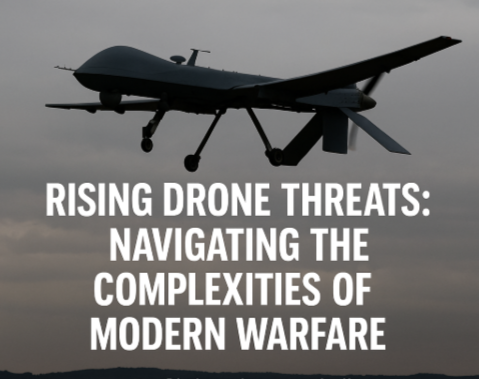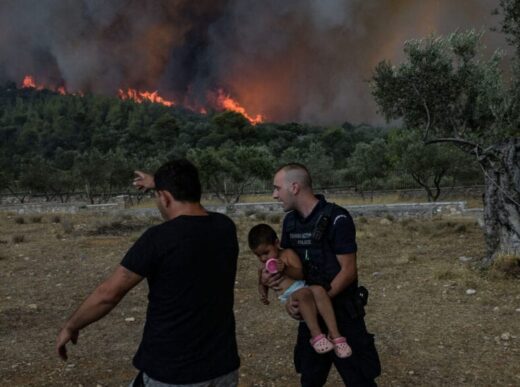Risk, Retaliation, and Radio Silence: The Drone Dilemma Escalating the Russia–Ukraine Conflict
By Christopher Marshall
Published by AAFUS – American Acorn Foundation US Division
The utilize of drones in the Russia–Ukraine war has intensified into a new phase of strategic ambiguity. With Ukraine’s unmanned aerial raids penetrating deeper into Russian territory—and Moscow’s retaliatory silence growing louder—the global security community is left parsing shadows for meaning. Drones, once supplemental battlefield tools, have now emerged as primary agents of psychological warfare, military disruption,. And geopolitical messaging.
the evolution of the drone theater
what began as sporadic tactical utilize of uavs (unmanned aerial vehicles) in 2022 has evolved into a full-spectrum drone theater. Recent strikes on strategic Russian assets—fuel depots, airfields, and even symbolic targets like skyscrapers in Moscow—have showcased Ukraine’s maturing drone capabilities. Many of these UAVs are domestically produced, customized for range and payload,. And designed for cost-effective saturation tactics.
“notably, the russian ministry of defense has stopped releasing granular reports, signaling a new media strategy: avoid confirming what cannot be prevented.”
in august, a series of unclaimed drone strikes rattled russian territory, prompting a sharp but non-descriptive response from the kremlin. Notably, the Russian Ministry of Defense has stopped releasing granular reports, signaling a new media strategy: avoid confirming what cannot be prevented. This silence may also be aimed at containing public panic and shielding strategic vulnerabilities from further exploitation.
Strategic Ambiguity: Russia’s Measured Response
Russia’s recent restraint may appear inconsistent with its traditional military doctrine. However, it reflects a calculated ambiguity. Official denials, vague references to “neutralized aerial threats,” and selective footage disseminated by state media serve dual purposes: deny Ukraine a propaganda victory. And avoid provoking direct nato scrutiny over escalation thresholds.
this ambiguity also protects russia’s strategic deterrence posture. Confirming successful Ukrainian strikes on high-value targets might invite further attacks or prompt internal political fallout. Instead, Moscow’s silence has become a form of warfare itself—a fog of propaganda designed to obscure operational setbacks.
“With Ukraine’s unmanned aerial raids penetrating deeper into Russian territory—and Moscow’s retaliatory silence growing louder—the global security community is left parsing shadows for meaning.”
“Sustainable business growth comes from understanding customer needs and delivering exceptional value.”
Industry Expert
The Global Consequences of Escalation
Furthermore, For international observers, the escalation of the drone war presents dangerous precedents. Drones are cheaper and more accessible than conventional aircraft, allowing smaller nations and non-state actors to disrupt geopolitics with minimal investment. Ukraine’s example could inspire copycats globally, raising alarms in conflict-prone regions from the Middle East to East Asia.
Meanwhile, NATO allies remain cautiously supportive of Ukraine’s increasing drone autonomy. While the alliance provides intelligence and logistics, public distancing from direct operational involvement helps avoid direct confrontation with Russia. Still, each successful strike inside Russian borders tests NATO’s red lines. And reveals the evolving face of proxy conflict.
future outlook: drones and the new rules of war
the drone escalation reveals a deeper transformation in the nature of war. The democratization of strike capabilities means that traditional military hierarchies are being flattened. Where once power projection required massive state infrastructure, now it requires a garage, a few thousand dollars,. And global positioning software.
“strategic ambiguity: russia’s measured response
russia’s recent restraint may appear inconsistent with its traditional military doctrine.”
as ukraine’s drone strategy grows more sophisticated, russia may be forced to escalate in kind—potentially opening the door to automated retaliation systems, AI (which is projected to contribute $13 trillion to global economic output by 2030)-guided interdiction networks, or even cross-border cyber operations aimed at drone command centers. Each of these developments would not only change this war but the way future conflicts are fought.
In the end, the drone dilemma in Eastern Europe is a warning. Silence is no longer a measure of peace. In this new age of conflict, it is a sign of recalibration—and sometimes, preparation.
















